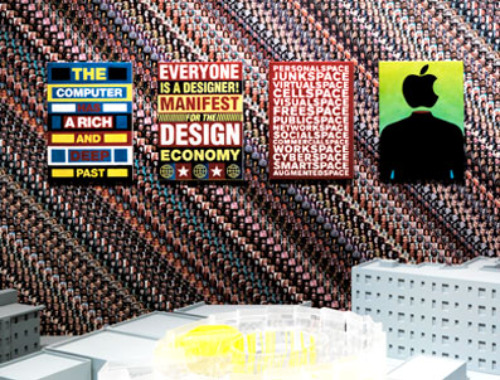The exhibit is an annual look at the goings on in the fields of architecture, products, fashion, graphics, and more. In Why Design Now? the ever present beat of sustainability and environmental awareness is shown to have permeated all if these disciplines. If you’ve ever been to an art exhibit at a museum or gallery, you see the work neatly displayed on clean, crisp walls with accompanying wall text. But did you know that each show requires freshly painted walls, possibly new built walls to accomodate the amount of art, new wall text done in vinyl lettering or printed posters, and catalogues of the work printed in book form and sold in the gift shop? A lot goes into each show as Lupton describes: To keep in line with what the Why Design Now? exhibit is all about, the museum wanted to improve their own processes. So how do you green up a museum exhibit? Lupton goes on to talk about how the museum used Flor carpet tiles instead of heavy platforms, zero-VOC paint and varnish, 100 percent post-industrial recycled wood, and a cardboard product made from 50 percent post-consumer waste for labels. They also printed large display images onto fabric, which is easier to roll up and lighter to ship. And finally the exhibition catalogue was printed using soy-based inks on FCS certified paper. Lupton says in so many words, the effort was a success, “…we were truly pleased to see that this light touch isn’t just better for the environment; it allows for a better museum experience, too.” What do you think? Are these light touches enough? Or could the museum go further in their greening efforts? [Image credit: Matt Flynn/Smithsonian Institution]
